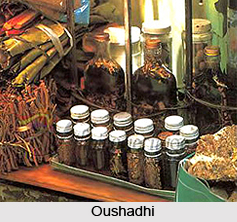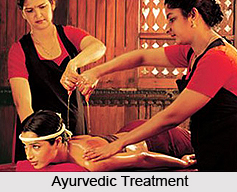 Like astronomy and metaphysics, the Hindus in Oushadhi or Medicine also kept pace with the most enlightened nations of the world. The Hindus attained a position through proficiency in Oushadhi and surgery as any people whose acquisitions are recorded. Oushadhi or Medicine has been developed to cure the diseases of the sick and protect the healthy. Its history goes back to the ancient times.
Like astronomy and metaphysics, the Hindus in Oushadhi or Medicine also kept pace with the most enlightened nations of the world. The Hindus attained a position through proficiency in Oushadhi and surgery as any people whose acquisitions are recorded. Oushadhi or Medicine has been developed to cure the diseases of the sick and protect the healthy. Its history goes back to the ancient times.
History of Oushadhi
In the Nidana or Diagnosis of Hindu medical books, it appears to define and distinguish symptoms with great accuracy. The Hindus had paid great attention to regimen and diet, and there are a number of works on the food and general treatment suited to the complaint, or favourable to the operation of the medicine administered. This branch of work is entitled as Pathyapathya.
After Diagnosis, the Chikitsa, or medical treatment of diseases was introduced. In Chikitsa the subject are a variety of compositions, containing much absurdity with much that is of value. Then is the Rasavidya, or Pharmacy, in which they are most deficient.
In Ayurveda, the medical writings of highest antiquity and authority are considered to be a portion of the fourth or Atharva Veda, and are consequently the work of Brahma.
 The art of Ayurveda was communicated to Daksha, one of the Chikitsa Prajapati, and by him the two Asvins, the sons of Surya, the Sun, were instructed in it. Then the two became the medical attendants of the Gods.
The art of Ayurveda was communicated to Daksha, one of the Chikitsa Prajapati, and by him the two Asvins, the sons of Surya, the Sun, were instructed in it. Then the two became the medical attendants of the Gods.
The duties of the Asvins were to treat the gods and demons when they were wounded after the war and there was conflict between them. The Asvins were designated to give chirurgical aid to the wounded gods and demons. The meaning of these legendary absurdities is clear enough, and is conformable to the tenor of all history.
Man, in the semi barbarous state, if not more subject to external injuries than internal disease, was at least more likely to seek remedies for the former. These were obvious to his senses, than to imagine the means of relieving the latter, whose nature he could so little comprehend.
Branches of Oushadhi
According to Ayurveda, there are eight branches of Oushadhi or medicine including internal medicine; surgery including anatomy; eye, ear, nose, and throat diseases; pediatrics; spirit medicine; toxicology; science of rejuvenation and Aphrodisiac. A student of Ayurveda was also expected to know ten arts that were indispensable in the preparation and application of his medicines which are distillation, operative skills, cooking, horticulture, metallurgy, sugar manufacture, pharmacy, analysis and separation of minerals, compounding of metals, and preparation of alkalis. As an alternative form of medicine in India, Unani medicine progressed during Indian sultanate and mughal periods. Both Ayurvedic and Unani medicines are based on theory of the presence of the elements in the human body.




